|
Traffic Light Control
Summary
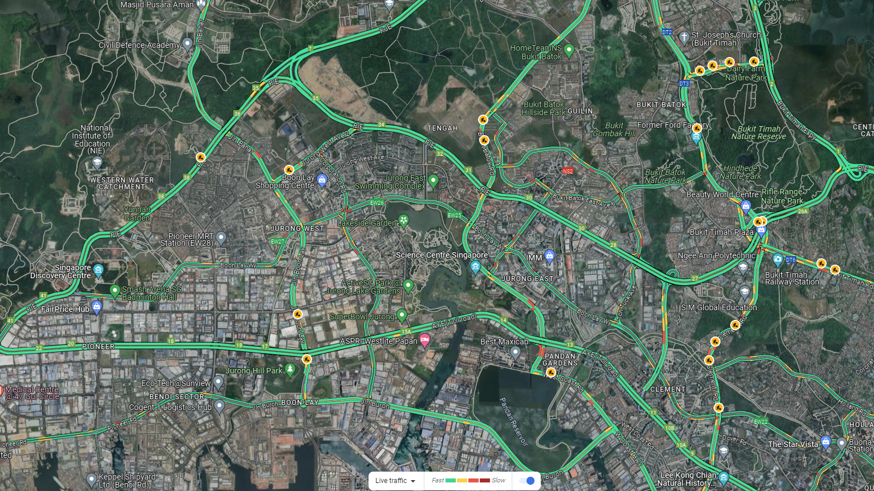 |
A centralized cycle-based adaptive traffic light control model
Developed based on the link flow dynamics modelled as a nonlinear mixed logical switching function considering the possibility of traffic flow jumping over multiple links within a fixed signal cycle and changing accessibility due to various splits and speeds.
With an extension of multi-cycle-based adaptive traffic light control method developed based on model predictive control (MPC) strategy, which extends the prediction step to multiple cycles considering the related traffic progression of each intersection in a larger temporal-spatial scale
Solved by a meta-heuristic differential evolutionary (DE) algorithm with a refined initialization strategy to improve the computation efficiency and performance of solution searching
Adopted a closed online updating strategy to build a network signal control framework, which keeps updating the parameters of the signal light control model through a deep learning-based turning ratio prediction model
|
Contributions
A Closed-loop Online Control Framework
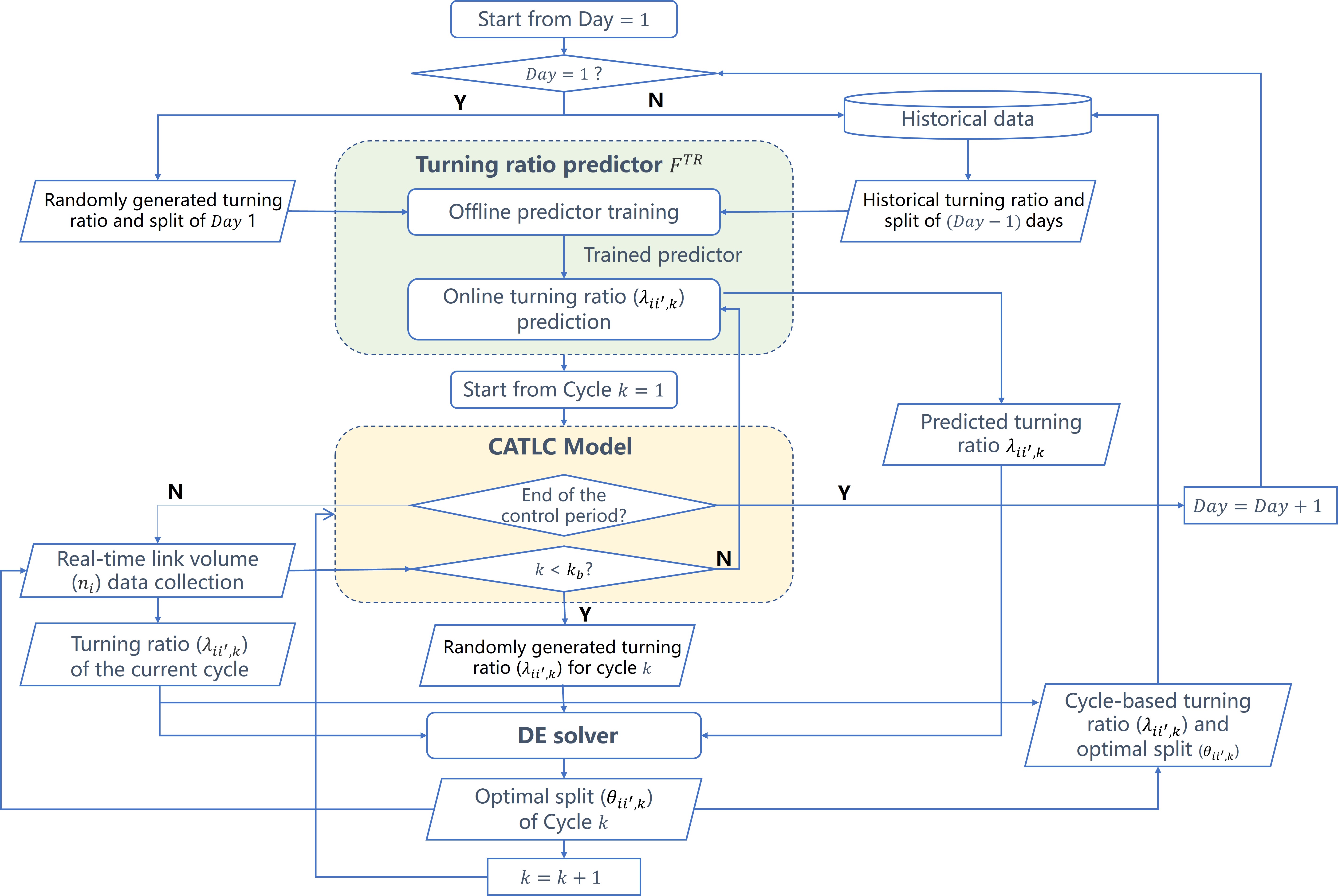 |
Real-time control: delay minimization modeled optimizes the splits of each intersection on a cyclic basis using the real-time traffic measurements as input
Turning ratio prediction: based on a trained Gated Recurrent Unit (GRU) deep learning network using the historical turning ratio and signal data as input
DE Solution algorithm: a metaheuristic algorithm to deal with large-scale optimization problem
Online updating pattern: continuously update the parameters like turning ratio, the density of link outflow, link speed, etc. With such a framework, network signal control optimization can be realized through self-learning and self-adaption.
|
A Link Flow Dynamics Model
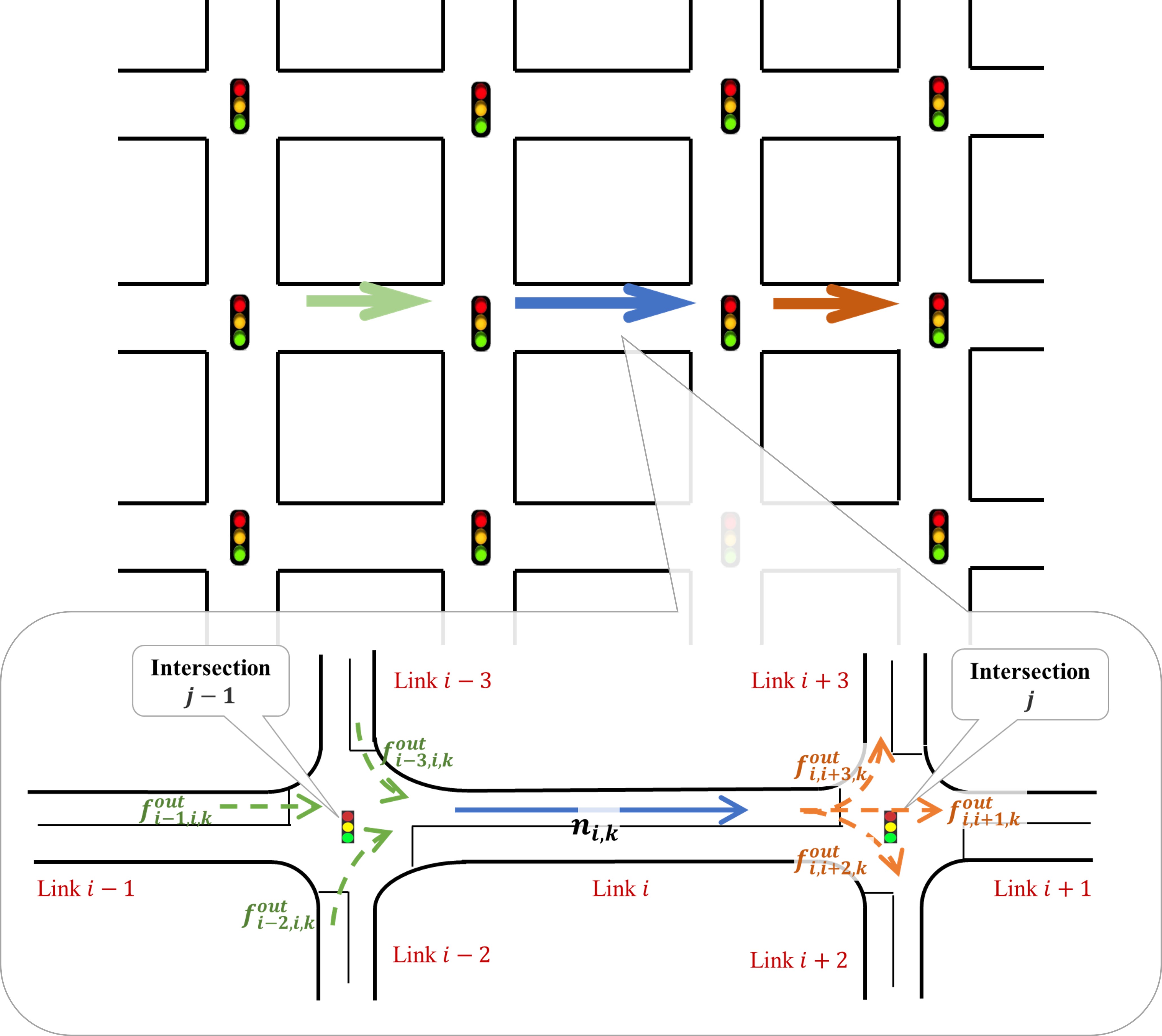 |
Kinematics heterogeneity for different turning flows in terms of turning ratio, travel speed, etc.
Consider the traffic flow jumping over links in cycle-based setting for all turning flows based on the accessibility of multiple links downstream
A piece-wise link speed function considering drivers' potential psychological response to the length of the green time
Turning ratio prediction using Gated Recurrent Unit (GRU) deep learning network
|
A Multi-cycle-based Adaptive Traffic Light Control Model
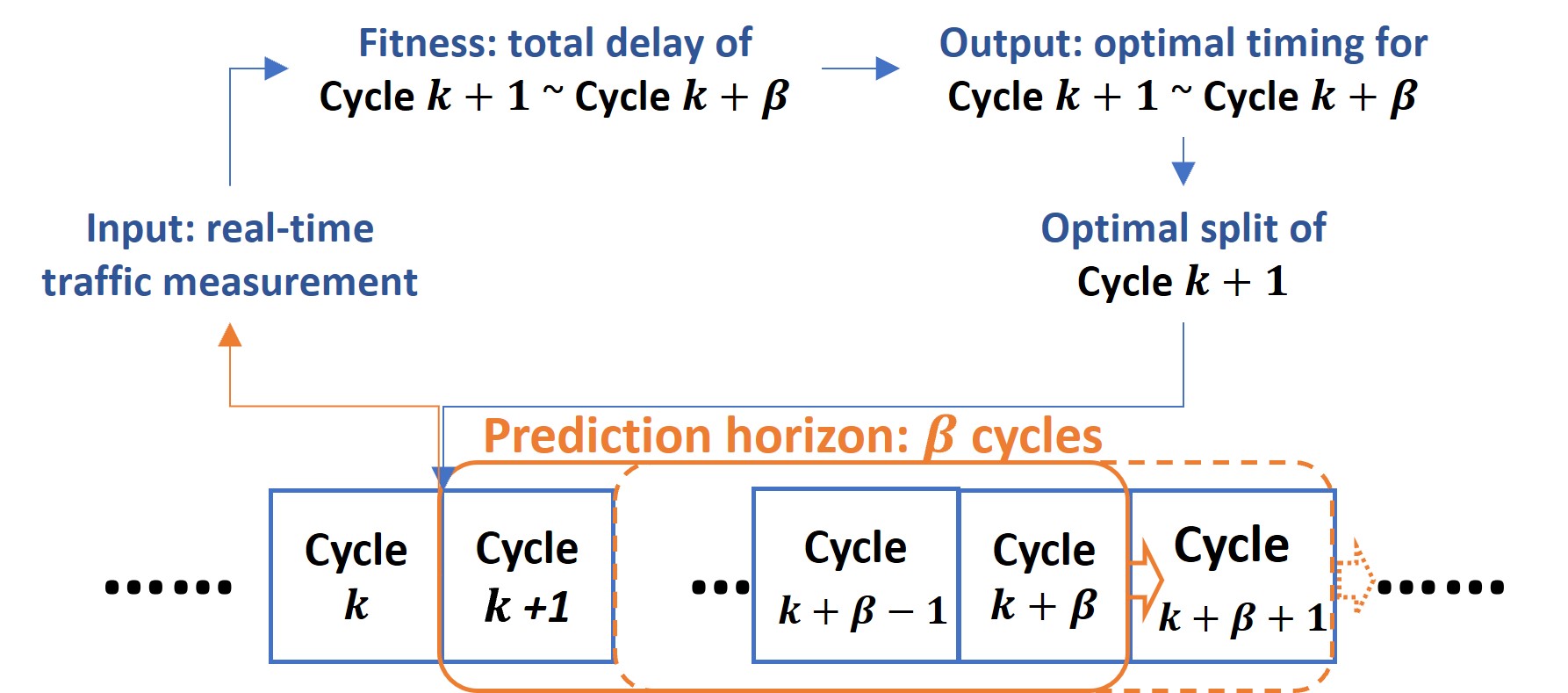 |
Extend the optimization step from a single cycle to multiple cycle to obtain a broader vision of how the traffic demand will aggregate and dissipate in the neighborhood of a certain intersection, thus encouraging searching towards better global optimum considering the traffic demand in a longer horizon
The setting of a fixed cycle length for all the links of one intersection provides the comparability of the pre-evaluation of the control performance of the optimization solution.
Based on a model predictive control strategy to rehearse the traffic flow dynamics in the coming multiple cycles and outputs the optimal timing scheme for such cycles, while the optimized green time of only the first cycle is implemented, thus realizing the network signal control in a receding horizon control pattern.
|
A SUMO-based Software-in-the-loop (SITL) Testbed
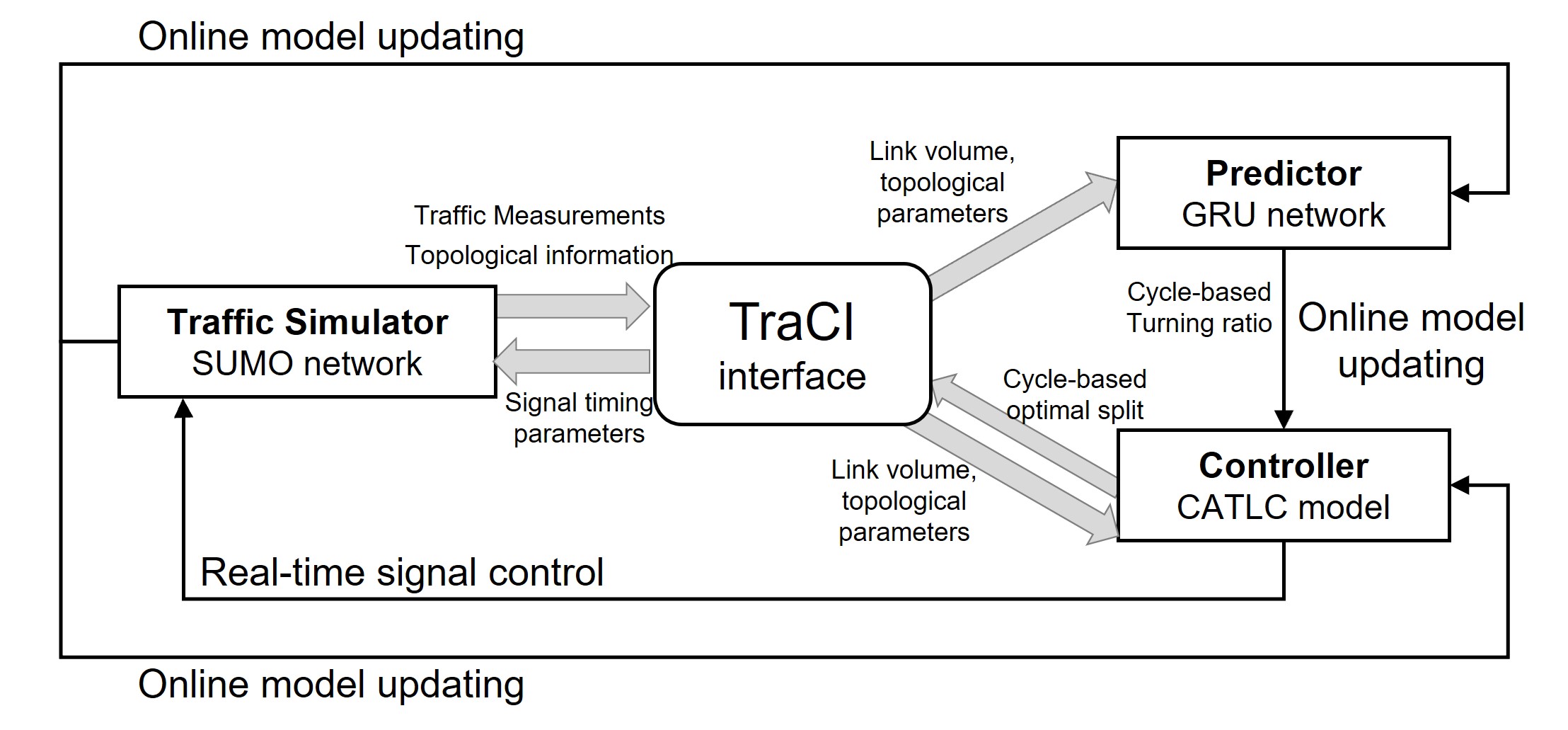 |
Build a closed-loop simulation platform based on the Jurong West area in Singapore. The simulation platform consists of three modules, simulator, predictor and controller.
The traffic simulator is built using the SUMO software and provides real-time link volume for predictor and controller through the 'TraCI' interface.
Based on the cyclic link volume, the GRU predictor is trained using historical data offline and predicts the turning ratio of each cycle as one of the inputs of the CATLC model for the controller in an online way.
Using the real-time link volume and predicted turning ratio, the controller realizes the optimization of green time allocation based on the DE solver, and returns the optimal timing scheme of the next cycle to the simulator.
With three modules collaborating with each other, this simulation testbed is able to realize self-tuning network-wide adaptive signal control in a closed-loop pattern through online model parameter updating.
|
Reference
Technology Disclosure (NTU Ref. 2023-347) Cycle-Based Network Adaptive Signal Control Method Using A Closed-Loop Online Updating Strategy. YAO Jiarong (CN); SU Rong (CA) filed on 25-Aug-23, Singapore provisional patent application number 10202303262U, filed on 17-Nov-2023.
.
R. Luo, Y. Zhang, Y. Zhou, H. Chen, L. Yang, J. Yang, R. Su. Deep Learning Approach for Long- Term Prediction of Electric Vehicle (EV) Charging Station Availability. 2021 IEEE International Intelligent Transportation Systems Conference (ITSC). 3334-3339. 2021. doi: 10.1109/ITSC48978.2021.9564633.
Y.C. Zhang, R. Su. An optimization model and trac light control scheme for heterogeneous trac systems. Transportation Research Part C: Emerging Technologies, vol. 124, pp. 102911. 2021
|





